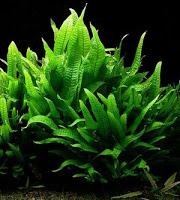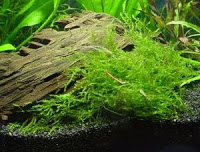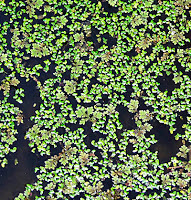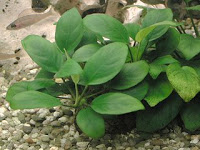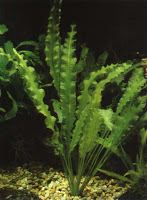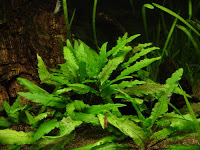So you currently have a fish only aquarium and you’re interested in adding live plants, but you’re daunted by all the equipment needed and extra time and money spent on fertilizing and trimming. You barely have the time to maintain your current set up and doubt you’d have any extra time to care for the plants. You read articles about CO2 and NPK and substrates and light levels and it all just overwhelms you to the point of giving up.
If this sounds familiar, read on.
Most people are daunted by planted aquariums, and rightly so. Obtaining a shimmering paradise of lush green plants and vibrant fish is not an easy task. You are emulating nature, and keeping everything in balance is no easy task. The key is to start out slowly. Before spending money on lighting upgrades and CO2 systems and other bells and whistles, try some hardy, low-light plants in your current set up. As long as you have a light, there are certain plants you can grow in any aquarium. Picking the right plants is very important though. This is where a lot of people’s dream of a planted aquarium dies as they watch their first (or far from first!) plants slowly wither away and die.
You need plants that are tough and don’t need a lot of light. That means they aren’t going to grow very fast, but they will probably survive. Here are some options for your first plants in a very low light setup (under 1.5 watts per gallon), and please note that the pictures are of specimens that were probably grown under more light and thus are more lush and green:
Java Fern – an old standby, this plant grows off of a rhizome and should not be planted in the substrate or the rhizome will rot. Simply tie it to a rock or driftwood or anchor it on top of the substrate and it will attach itself via roots. Java Ferns are very slow growers and produce little baby plants on their leaves. These can be separated once large enough and anchored and they will grow into a new plant.
Java Moss – a stringy moss that also grows slowly can be grown un-anchored (it actually naturally sinks) or tied to an object to which it will attach. Not the prettiest plant in a low light environment as it tends to be stringier, but a very hardy plant. It can become somewhat of a pest though if it gets into your filter, though I’ve never had a problem with this since it sinks.
Duckweed – a floating plant that grows rapidly on the surface of the water, duckweed can often be gotten for free from any pet store, where it is often an unwanted pest. It sucks up nutrients rapidly and can quickly cover the surface of your aquarium blocking most light, so if you have other plants, duckweed is not recommended. It is also quite hard to get rid of once you get it, since the leaves can be tiny and if you leave even just one behind it can turn into hundreds in a short amount of time. Some fish do enjoy eating this plant though, especially goldfish.
Anubias – Most of the Anubias available will grow in almost any light and are quite pretty. However, some grow to be quite large, so you may want to look online for a “petite” variety that tends to stay much smaller. These plants also have a rhizome and should not be buried in the substrate but tied to driftwood, rocks, or anchored above the substrate. Anubias are very slow growers as well.
Aponogetons – These plants grow from a bulb and do well in low light. They can however get quite large as well. Plant the bulb under the substrate just as you would a normal plant. Many come in the form of dried bulbs available as “mystery plants” at less than reputable pet stores. To grow it, simply plant the bulb in the substrate.
Cryptocorynes – Depending on the type of crypt, some can survive in very low light. Most of the commonly available varieties (C. wendtii) are fairly hardy. They grow slowly, but don’t like being moved around after they’re rooted.
These plants shouldn’t need any fertilizers aside from what you regularly feed your fish and should stay alive in almost any aquarium. Growth will be slow, but that’s to be expected with these plants and low light. With these plants, you can have a planted aquarium with almost no additional effort on your part. The plants will help to clean the water and add oxygen and should increase the overall stability of the aquarium. Another benefit of these slow growing, hardy plants is that you don’t have to worry about trimming back your plants every week (except Duckweed, which may need thinning out every week or so, but all that takes is a scoop or cup).
From there you can slowly add better lights, better substrate, CO2, and fertilizers at a rate that you’re comfortable with. I’d recommend adding CO2 first, before brighter lights, only because adding brighter lights with no CO2 can lead to algae problems. That and adding CO2 to an aquarium with low light can till provide a noticeable boost in plant growth (almost as big as a new light).
Or you can simply enjoy it as is. You can certainly make an attractive planted aquarium without any additional technology or effort. So go ahead, add a few hardy plants and take the plunge into planted aquariums!

